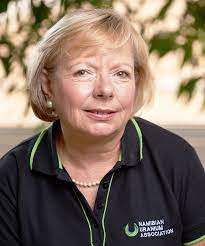
HyIron Oshivela – world’s first Green Iron mine launched near Arandis

By Adolf Kaure.
The world’s first-ever Green Iron mine known as HyIron Oshivela was officially inaugurated by the Minister in the Presidency, Hon Christine Hoebes near Arandis on Monday to the investment tune of N$600 million.
With investment deriving from a partnership formed between the Namibian government as well as the German Ministry of Economy and Climate Action as well other European stakeholders, the project’s production pilot phase is set to commence by the end of 2024.
According to Hoebes, the HyIron Oshivela project has the potential to contribute to the de-carbonisation of the planet, while positioning Namibia at the forefront of the green industrial transition.
“In addition to that, because of this project, Namibia will become the first country in the world to produce green iron, which is iron produced at zero emissions.”
“Namibia contributes less than 1% to the global carbon emissions, but being a responsible global citizen that is cognizant of the universal challenge of climate change, our government has made a deliberate decision to contribute to the global aspirations to transition to clean and green energy.”
“With an abundance of natural resources and an enduring commitment to secure a brighter, safer and more secure future for our children, this was an easy decision for the Government to make.”
“This commitment is also in line with our developmental aspirations as outlined in the Harambee Prosperity Plan II which identified renewable hydrogen as one of the pillars on which our economic growth is anchored,” she said.
Apart from other financial spin-offs, the project is set create 50 new jobs for locals.
“I am inspired by the prospects of collaboration and knowledge transfer to empower Namibians working in this project with new skills that will enable them to adapt and thrive in the new green economy,” continued the minister.
“I therefore encourage the HyIron team to consider creating these linkages and collaboration with particularly our institutions of higher education to expose Namibians to these emerging industries and knowledge.”
“In an effort to create a sustainable economy, our immediate objective as a government is to leverage the abundant natural resources to diversify our economy,” said Hoebes.
The Minister further emphasised the importance of value addition to Namibia’s own iron ore and ultimately manufacturing Direct Reduced Iron in the country.
“Local value addition leads to the creation of jobs in the value chain and throughout the wider economy. By enhancing our products through local processing, we can command higher market prices, increasing the economic benefits for Namibia.”
“This is also the essence of our Local Content Policy, which ensures that the project not only draws green technology businesses and enhances living standards but also meaningfully incorporates Namibian citizens and companies across the value chain,” she said.
According to the Managing Director of HyIron, Johannes Michels, despite calculating profit margins not being feasible due to the project being a world first, no losses will be incurred.
“It will be definite that we will not have losses for this project. We just don’t know what will be the exact profitability of it yet.”
“This is pilot industrial production. Before the energy transition, it was not possible to produce this kind of iron because it was a heavy industrial process.”
“It needed big investments into technology. Now, with the change of the energy source to renewable energy, it has become possible to produce small units and receive a level of economy at a relatively small economy like ours,” said Michels.
The project targets 15,000 tonnes of iron every year with the possibility of producing more after the pilot phase is complete.

Stakeholders gathered at the historic launch of the world’s first Green Iron mine near Arandis. (Photograph by Adolf Kaure)












































